Web 2.0: you also create
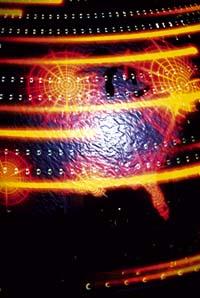
The word Web 2.0 is due to O'Reilly Media, more specifically to Dale Dougherty, founder of this company with Tim O'Reilly. The term was first used in 2004 by Dale Dougherty. He used it to express the second generation of web based on user communities, such as blogs, forums and wikis. They are those who make available and promote collaboration and exchange of information between users.
In summary, it can be said that initially the Internet was full of static HTML pages and that these pages were not updated frequently due to the painful maintenance task. Subsequently, little by little, the websites that fed on the databases - known as Web 1.5 - were appearing until they reached the current interactive websites and web services and the diversity of applications. In this way, many of the applications that were previously on the desktop are running in a web environment, both companies and individuals: management applications, photo galleries, atlas, encyclopedias, multimedia applications... To them we must add the applications that take advantage of the services offered by the Internet and that could not be used in a desktop environment.
This is because the execution of applications in a web environment has several advantages: being cross-platform, the use of the application only requires a browser, so it can be used on most operating systems without the need to install other applications. From the Internet we can access our Apps from any computer and from anywhere and save our data from one session to another, entering your user and password. Finally, as a special feature that characterizes the Web 2.0, you can share these personal data, photographs or documents with others.
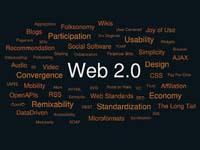
After the opening of interactive websites, many types of open internet applications have been appearing, some of them able to perform magnificent operations. However, some types of applications have been especially widespread and have acquired great prestige. Among them are undoubtedly blogs and wikis.
Blogs blogs Blogs Blogs
The term blog comes from English, specifically from the combination of web words and log (English newspaper). They are frequently updated websites where one or more participants write news, articles, reports or opinions. These writings usually appear sorted from major to minor, and can be classified according to specific labels or defined areas. Entries that can be published in blogs do not have to be just text, but can include photographs, links and videos in reports or articles.
In addition, readers can make suggestions and the writer can respond. In this way, conversations or debates can be generated. However, this feature is not always enabled in all blogs. Most blog creation apps offer different options to define permissions in the suggestions, you can disable the suggestions, or give the option to write only to registered users, or leave them free for all users.

Wikis
Blogs, although they can be done in group, are usually works of a person. In the case of wikis, on the other hand, it is about collaboration. Precisely, wiki is an ideal way to build collaborative websites. In fact, through the browser, several users can edit the text --formatted - and links easily. In this way, users can create, modify and delete the contents of a website or intranet in a simple and agile way. In addition, wikis allow you to easily recover previous versions of the content. The history of changes made in each document or page, which is an important advantage, is preserved.
Wikipedia is one of the most outstanding results of the wikis. Wikipedia is a multilingual encyclopedia that can be consulted on the Internet and is formed in auzolan, unlike the other Web encyclopedia, that is, anyone can create an article or create one already existing in the language they want. You can say that Wiki is a great application, because it is the way to write and compose the articles, and from that word the name has been taken. At present it has become a prestigious encyclopedia on the Internet widely used (the address of the Basque wikipedia is http://eu.wikipedia.org/).

Wikipedia is a gigantic wiki project available at all levels. It can be a very interesting option, both for companies and associations, for a working team to develop a unique and consensual document or to manage the knowledge of the company.
As a curiosity, the term wiki comes from Hawaiian, wiki wiki wiki esamolde, which means fast in Basque. Ward Cunningham created the first web wiki.
Web syndication and RSS
In addition to the applications, one of the most interesting features that has come with the Web 2.0 is the possibility to expand the new contents of a website. It is done thanks to web syndication. This option is mainly used in blogs, but in principle is a resource that can be used on any website. In this way, any user who wants to follow the contents of a set of websites does not have to access them daily. Through a desktop application or web environment you can access the new contents of all websites, as long as each website allows it.
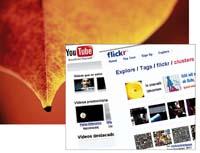
Thus, web syndication is only a flow of diffusion of the contents of a website. Through syndication, a website can send content sharing its contents with a source reader in the web environment or on the desktop or with another website that wants to use its contents.
Syndication is encoded in XML format and the most used formats are RSS and Atom. However, currently RSS (Really Simple Syndication) is used to designate both formats.
To read the RSS feeds, as indicated, readers of sources are used. They can be desktop or Internet environment, and the user only has to subscribe to websites that interest him. From there, the RSS reader receives updated RSS feeds and notifies us of the new contents that we have not read on each website.
Among RSS readers, one of the best known is Bloglines (http://www.bloglines.com), which is in French and Spanish, but not in Basque, currently. It is a web environment reader with some advantages. With Internet access and a browser, from any computer you can read the news you want or the contents of the favorite websites, including email and password.
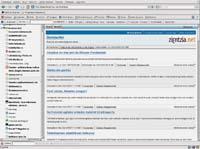
Registration to access the service is free and just specify the email, password, desired language and time zone. Once the session is started, in the left menu the subscribed RSS feeds appear and in parentheses the number of new contents. In addition, they can be classified by folders to organize them better. On the right side are shown the new contents of the selected RSS feed.
The internet giant Google has also developed its RSS reader. It is called Google Reader and can be found in http://www.google.com/reader/. As in Bloglines, RSS feeds can be organized by folders. In addition, Google Reader offers statistics on subscriptions: Average number of entries from each RSS feed per day, for example, in relation to our readings. And, as expected, being the Google RSS reader, it has a quite complete search engine that allows you to search all entries, in a folder or in all RSS feeds. However, Google Reader is not yet in Basque.
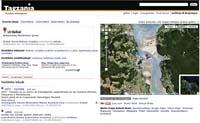
The source reader Alesti RSS, on the other hand, is in Basque and, like the previous two, belongs to the web environment. The organization system of RSS feeds is not by folders but by labels. That is to say, to each RSS flow several tags separated by commas can be associated, so you can see the RSS feeds associated with that tag by clicking on each tag. If you want to use Alesti you can do so at http://www.alesti.org. Registration is also free in Alesti and the only data to enter are the username, password and email.
Basque Web 2.0
Fortunately, on the Internet not everything is in English, and over time some projects have been formed in Basque. Among them, in addition to the aforementioned ones, are www.zabaldu.com - which disseminates news that appear on the Internet -; www.galdu.com, service of consultation; www.tagzania.com, to create tags in maps of the whole world; or www.blogari.net, a means for anyone who wants to create their own blog. You have no excuse to access the Web 2.0.

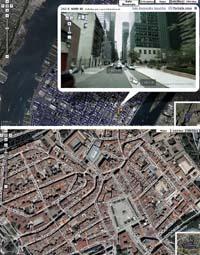
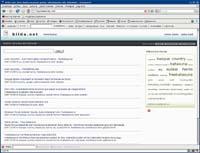
Buletina
Bidali zure helbide elektronikoa eta jaso asteroko buletina zure sarrera-ontzian











